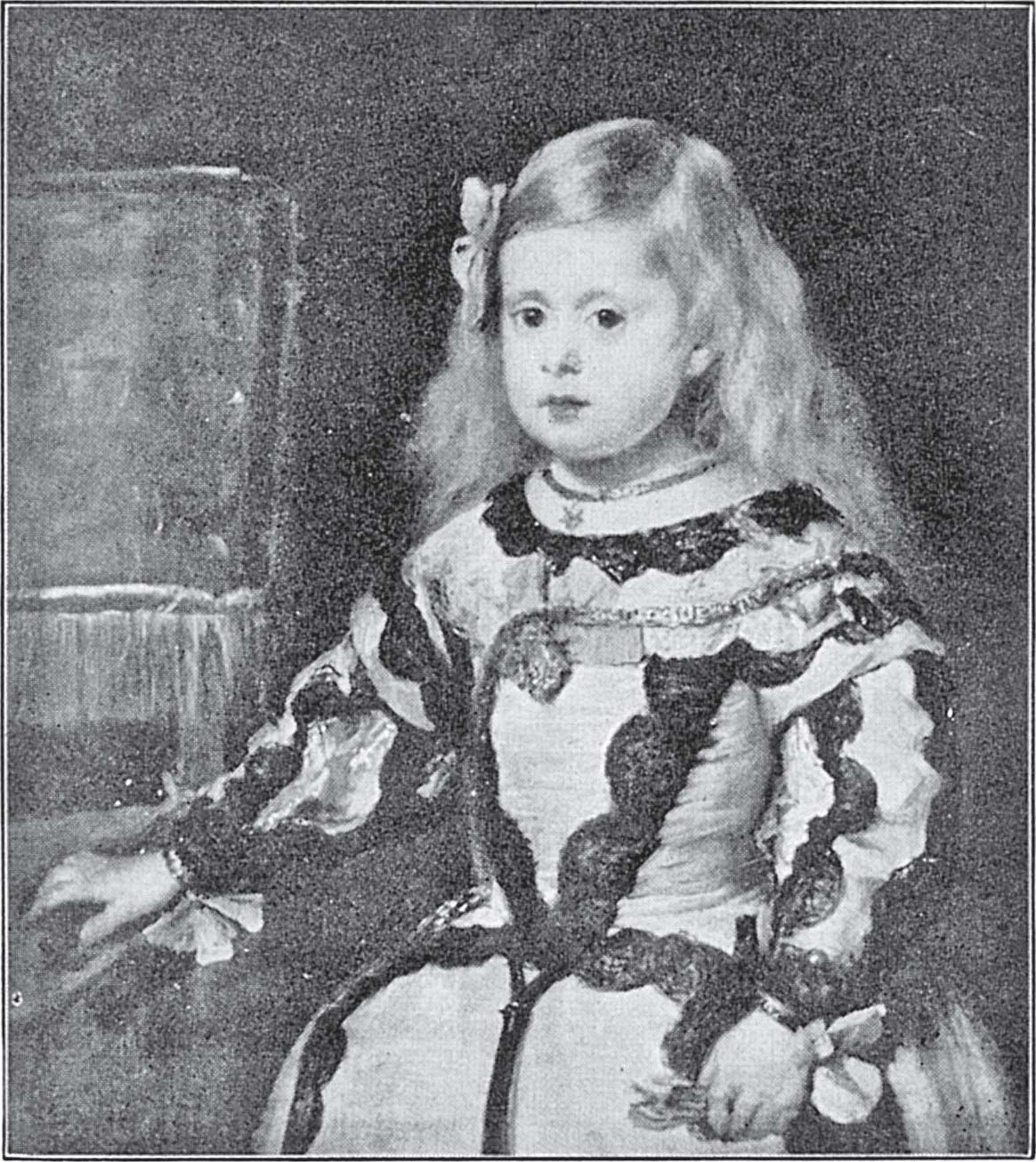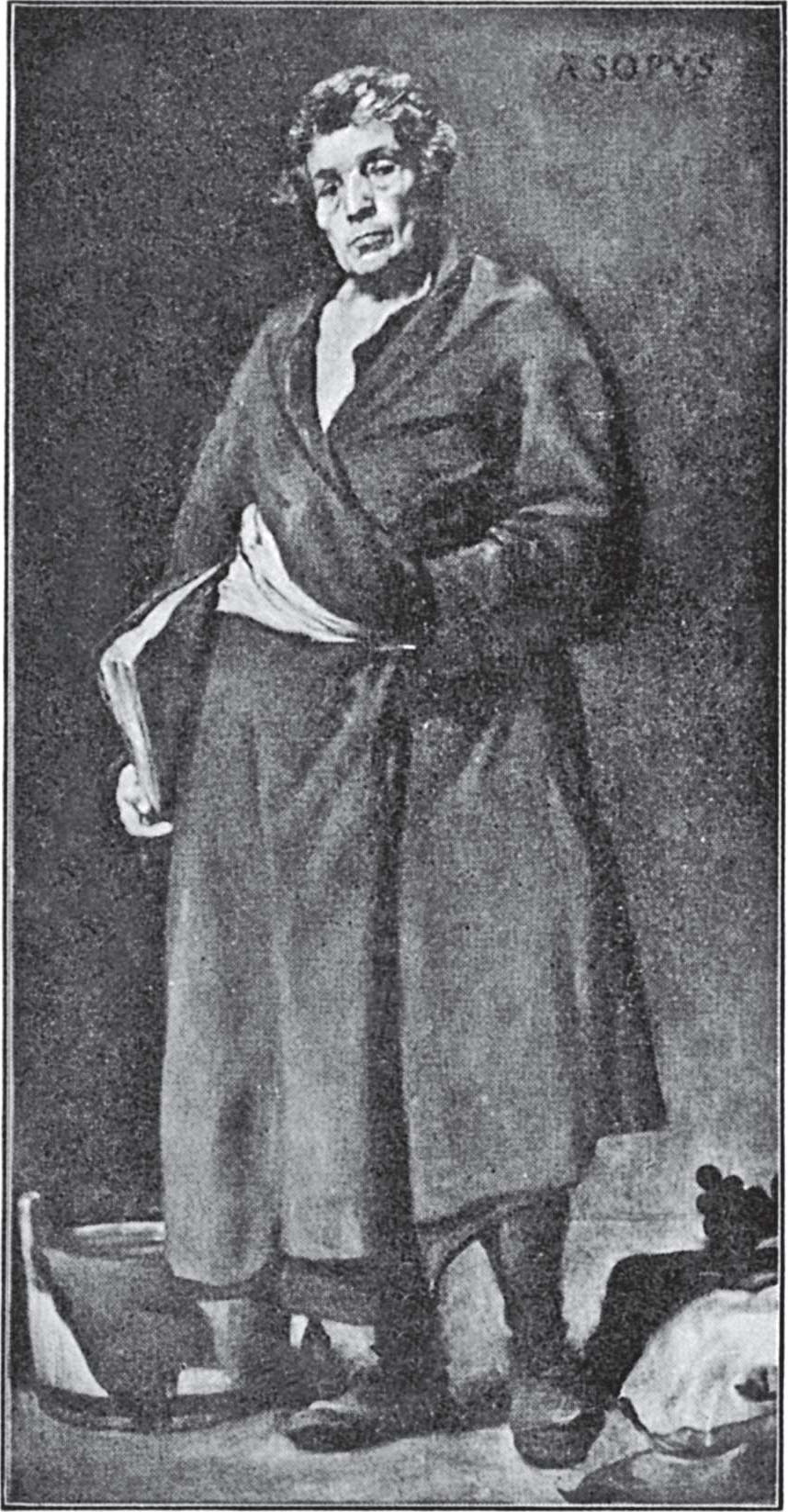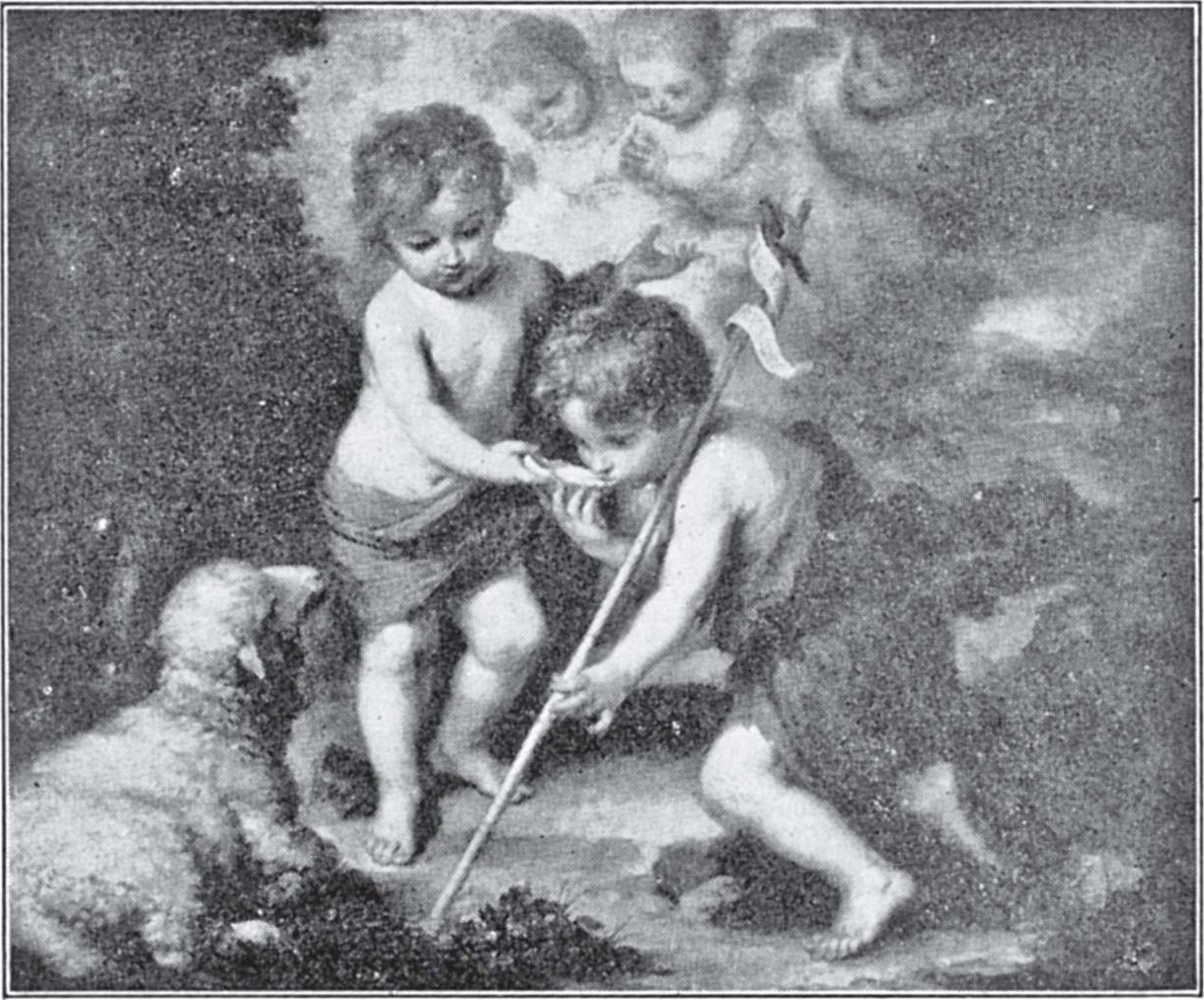





T HIS chapter is about Spain. But I’m going to begin by telling you about Crete, which hasn’t anything at all to do with Spain.
Crete is an island south of Greece. It belongs to Greece and the people of Crete speak the Greek language. Sometime about the middle of the fifteen hundreds (nobody knows just when) there was born in Crete a baby who was to become a celebrated painter. You have never heard of his name and couldn’t pronounce it if you had. I’ll tell it to you just to show you, but don’t try to remember it, for this painter is never spoken of except by his nickname. Here is his real name — Domenico Theotocopuli.
He was a mysterious kind of man and no one knows very much about his life. He seems to have left Crete and gone to Venice to study art under the great Titian. The next we hear of him he has bobbed up in Spain and settled in the city of Toledo. In Spain he remained and in Spain he died in 1614, but he always thought of himself as a Greek rather than a Spaniard, and he signed his most important paintings in Greek letters. The Spaniards could hardly be expected to call him Domenico Theotocopuli any more than you are expected to. They just called him “that Greek fellow” or “the Greek”, which in Spanish is E1 Greco.
E1 Greco painted pictures that are so different from other artists’ paintings that you may think they are not beautiful when you first see them. All his people are too long and thin to be like real people, and the colors are used differently from the colors in most paintings.
When you see a picture by El Greco you must remember that he is not trying to make you see a picture of things as they would look in a photograph. His paintings of men and scenes represent the spirit (or the idea), which is a different thing from what you would see with your eyes if you looked at real men and scenes. This is hard for many people to understand. They think a painting should always show you exactly what the real things look like. But a camera can do that just as well as an artist, and so many artists sometimes paint, like El Greco, not what they see but what they think will look best as a picture.
When El Greco died the man who was to become the greatest Spanish painter of all was still only a boy of fourteen.It seems strange to us that he is called by his mother’s name instead of by his father’s. It was just an old Spanish custom.I don’t expect you to remember this painter’s entire name,because it was Diego Rodriguez de Silva y Velasquez. What you have to remember is the Velasquez part, for that is what he was called. Velasquez (Vay-las’keth) was born in the city of Seville in 1599, the very same year that Van Dyck was born in Holland.
When Velasquez had grown up and had painted for some time he decided to go to the capital of Spain, Madrid. The king saw some of his work and liked it, and so the next year Velasquez was sent for and moved to Madrid for good. There he became the king’s painter. We know very well what this king of Spain looked like, because Velasquez painted many pictures of him. That was one of the duties of the king’s painter. The king was Philip IV. The first thing you notice about Philip is his very large mustaches which curl up to his eyes. They must have been a nuisance, those mustaches, for Philip had to put leather cases on them at night to keep them shaped right. I wonder what the king looked like when he got his fancy mustaches caught in the rain!

NO.20-1 THE

Almost all the portraits of the king and his nobles show a wide stiff white collar that sticks out from around each man’s neck. King Philip was very proud of this kind of collar, and for a very special reason — he invented it himself! He was so proud of his new invention that he had a great celebration after which there was a solemn procession or parade to church to thank God for such a blessing.
Here is a portrait of a little girl that Velasquez painted, the Princess Marguerite. She was a daughter of King Philip.
Velasquez was very different from El Greco in his painting. El Greco painted things as he wanted them to look, to give his idea of them. El Greco used his imagination instead of putting down on canvas just what he saw with his eyes . But Velasquez painted objects to look like the real objects. We call a painter who does this a realist, because he paints only what he really sees.When Rubens came to Madrid, the king asked Velasquez to show him the art treasures of Spain. Rubens and Velasquez got along together very well. Rubens admired Velasquez’s paintings and Velasquez admired the work of Rubens.
Velasquez wanted to see the famous paintings of the great Italian artists and so he got permission from the king to make trips to Italy, where he made copies of some of the paintings of Tintoretto, Michelangelo, and Titian.
And here is a picture of your old friend Æsop, who wrote the fable of the Fox and the Grapes, the Dog in the Manger,and other famous fables.
Of course the picture is not of the real Æsop. Velasquez just painted the picture as he thought Æsop might have looked, for Æsop himself lived two thousand years before Velasquez.
Velasquez has been called the painters’ painter, because so many painters have admired and praised his work. He was the greatest of the Spanish painters, greater than El Greco and greater than the next Spanish painter I’m going to tell you about, whose name was Murillo (Moo-reel’yo).Murillo, like Velasquez, was born in Seville. He went to Madrid, where Velasquez encouraged him in his painting and got him permission to study the paintings in the king’s picture gallery. After two years there, Murillo went back to live in Seville. He was still poor and unknown.

NO.20-2

Now, about that time the Franciscan friars, or monks,in Seville were looking for an artist who would decorate one of their buildings with paintings. They wanted to get some famous artist, but they had too little money to pay a famous artist’s prices. So they decided to let Murillo do the work. Murillo painted eleven pictures for the friars and every one liked them so much that he was asked to do more pictures than he could possibly paint.
Then Murillo painted eleven pictures for another building.These were even better than the first eleven, and made him famous.
Another picture that Murillo painted has a story told about it that shows how lifelike it is. The picture is of a priest with a spaniel at his feet, and the story is that when a live dog saw the painted spaniel he thought it was a real spaniel and growled at it. It reminds us of the story of the birds who pecked the grapes in Zeuxis’s picture. I don’t believe it can be a true story because a dog can’t be fooled by a picture the way he can by a mirror.
Murillo was very good at painting babies and Madonnas.His Madonnas generally have dark hair and eyes. On the next page is a picture that all children seem to like. It shows the baby Christ and little Saint John getting a drink of water out of a sea-shell. The little lamb in the corner of the picture looks as if he were thirsty and wanted a drink, too.
Murillo was so successful at selling his pictures that he made a large fortune, but he was a very generous man and gave much money to the poor. He had once been poor himself, and he knew how much they needed help.

NO.20-3 THE

One day when he was old he was getting up on a scaffolding to paint the higher parts of a large picture, when he stumbled and fell. His was so badly hurt that he never got well and the picture was left unfinished.
The people of Seville never forgot their famous painter and even to-day in Seville they call any beautiful picture a“Murillo”.